InSight
Latest
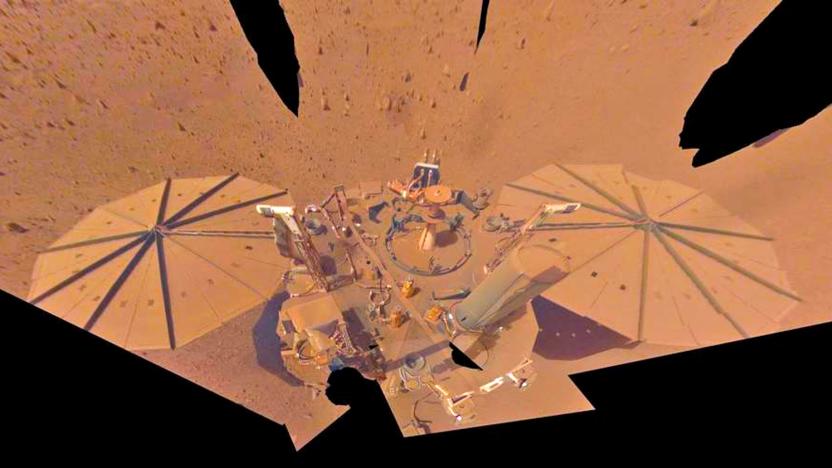
NASA officially retires its InSight Mars lander
After two consecutive failed attempts to re-establish contact, NASA on Wednesday officially called an end to its four-year InSight Mars mission.
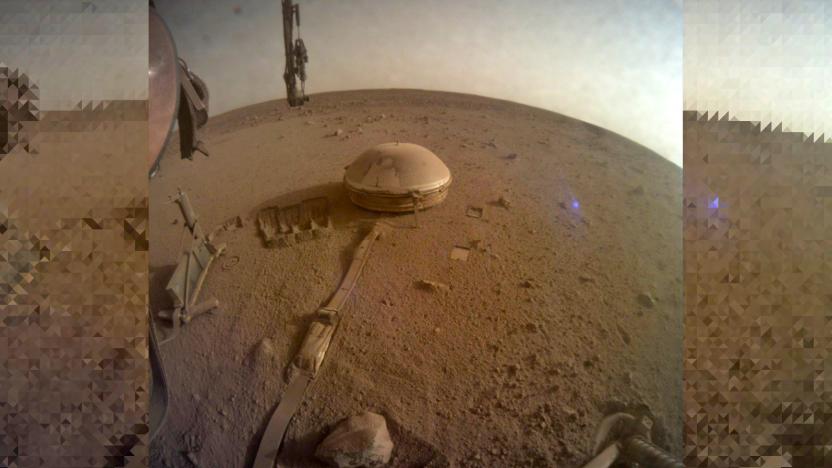
NASA's InSight lander says goodbye from Mars
"My power’s really low, so this may be the last image I can send," the NASA InSight Twitter account said.

NASA's InSight lander detected a meteoroid impact on Mars
NASA's InSight lander detected a meteoroid impact on Mars — the first time any mission has caught one on the planet.
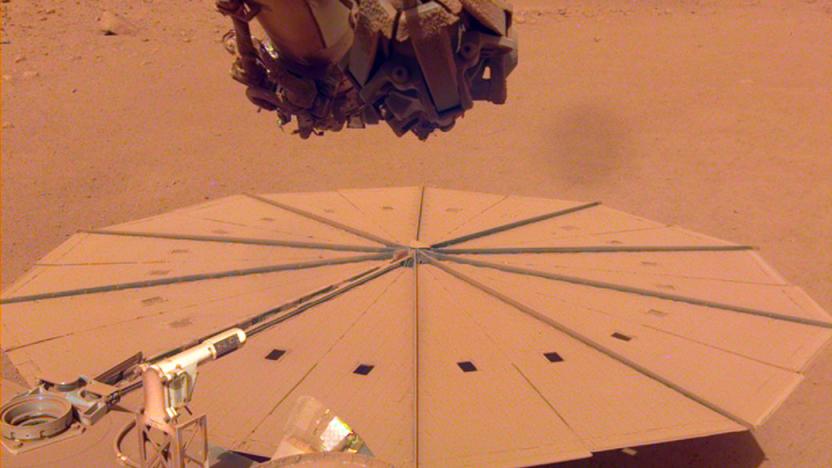
NASA will soon bid farewell to its Mars InSight lander
The lander is expected to end its science activities by the end of summer and to be completely unresponsive by December.
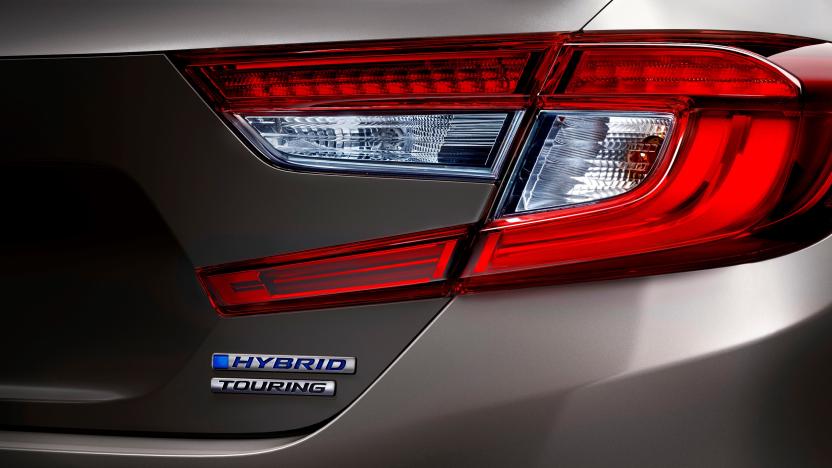
Honda will retire the hybrid Insight to focus production on its 'core' models
Honda on Thursday announced that it will stop production on the Hybrid Insight this June as the company refocuses efforts on its "core" hybrid models — the Accord, CR-V and Civic.
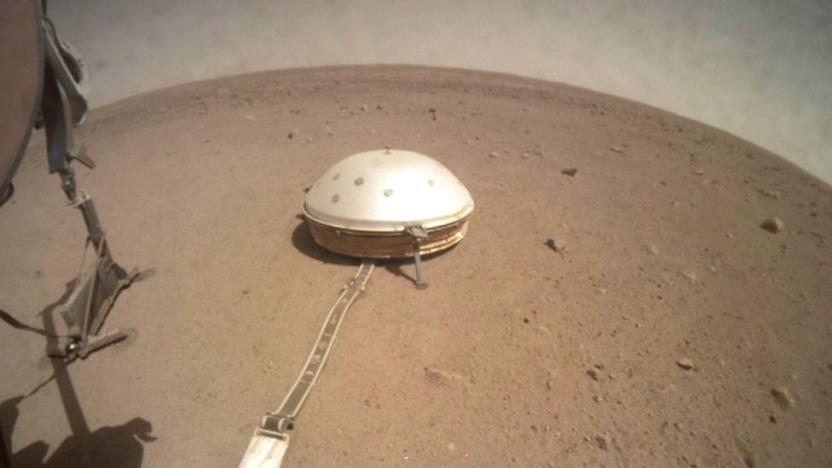
NASA's InSight probe reveals the first detailed look at the interior of Mars
NASA's InSight lander arrived on Mars in 2018 to learn about its interior by monitoring "marsquakes," and now the project is starting to really pay off.

NASA abandons InSight mission to crack the surface of Mars
Martian soil does not behave in the way NASA engineers expected.

Honda recalls 737,000 Accord and Insight cars over a software flaw
Honda is recalling 1.4 million cars, 737,000 of them for software flaws that could 'break' rear-view cameras, turn signals and windshield wipers.
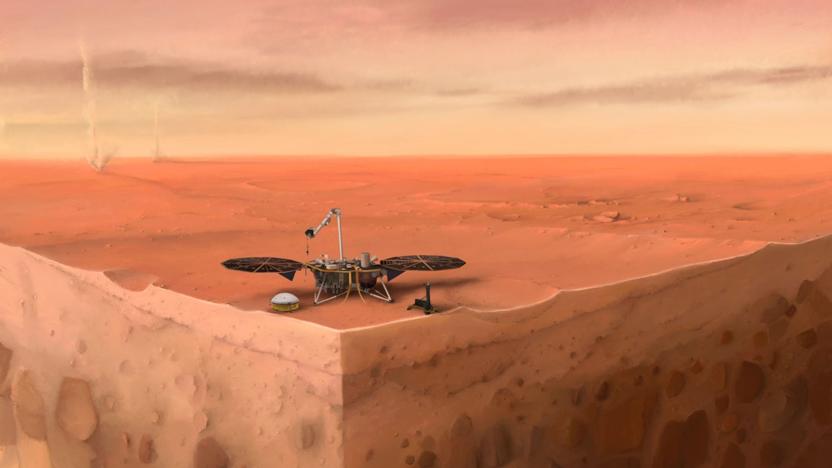
NASA says its InSight lander has detected over 450 'marsquakes'
Marsquakes are more common but less intense than NASA thought. That's one of the things the agency has revealed in the six papers it recently published on InSight's findings since it landed on the red planet. Apparently, InSight's Seismic Experiment for Interior Structure instrument (SEIS) recorded over 450 seismic signals or "trembling" events since last year. Now, the agency has announced that "the vast majority" of them were probably marsquakes and not merely noise created by environmental factors like the wind.

NASA's InSight probe is still struggling to crack the surface of Mars
It's been a rough few weeks on Mars for NASA's InSight lander. After overcoming a major hurdle and getting its drill running again a few weeks ago, a new problem has arisen - its heat probe has popped right out of the soil.

NASA's InSight lander can finally dig a hole for its Mars heat probe
NASA's InSight lander was supposed be digging a hole so a probe (above) could measure the heat escaping from Mars' interior, but it hasn't made much progress since work got started in February -- it hadn't even finished burying itself. At last, it's making some headway. The agency has revealed that the probe, nicknamed "the mole," is finally digging in earnest thanks to a new strategy. The arm had been stymied by unusually rough soil, but the team found it could get the necessary friction by having InSight press its robotic arm against the probe.
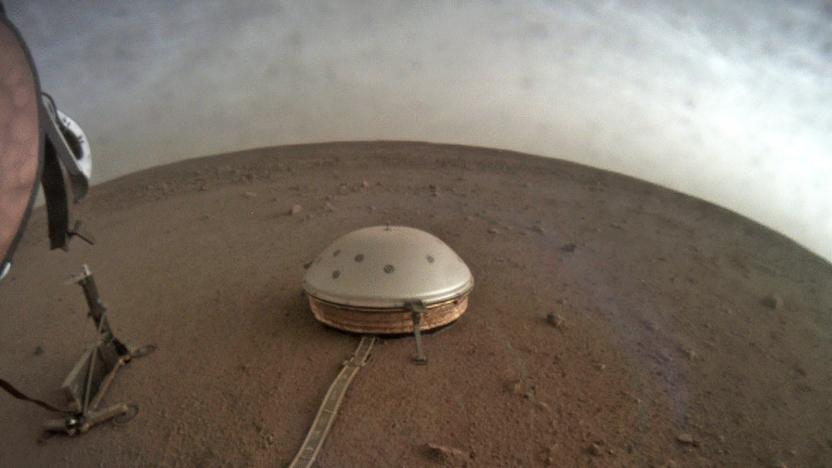
NASA shares the odd sounds from its Mars seismometer
NASA's InSight lander is providing a veritable soundtrack for Mars. The agency has posted a handful of recordings from the SEIS (Seismic Experiment for Interior Structure) that give a feel for Mars' activity. Two of them are "representative" marsquakes, and might be good for testing the bass response of your headphones or speakers -- they're low, steady rumbles. They suggest that Mars' crust is a blend between Earth's and the Moon's, with seismic events lasting longer than on the Earth (about a minute) but much shorter than its lunar neighbor.
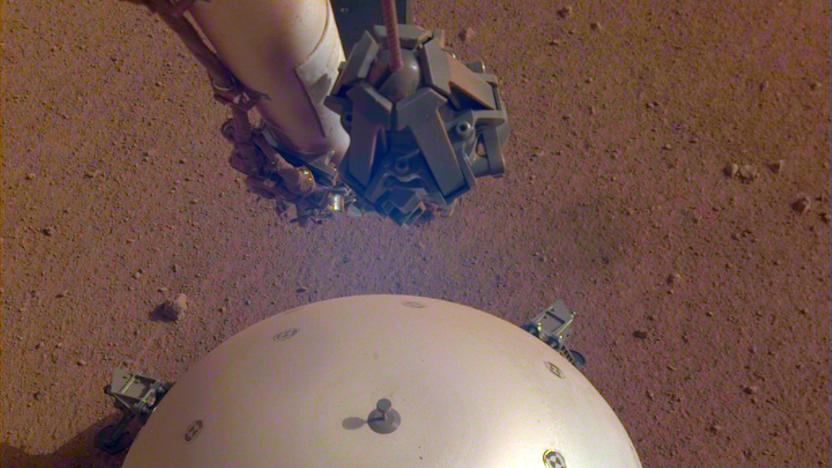
NASA's InSight lander may have recorded a marsquake
It might not have taken long for NASA's InSight lander to capture a marsquake. The machine's seismometer recorded trembling on April 6th that seems to have come from within Mars, rather than an above-ground source like the wind or InSight itself. Although the event was too quiet to say much about Mars' insides (it would have been difficult to detect on Earth), it suggested that Mars is, in fact seismically active. There were other events on March 14th, April 10th and April 11th, although they were faint enough as to have been ambiguous.

NASA is giving us daily weather reports from Mars
NASA says its new Mars weather website will be "geeky fun for meteorologists." For the rest of us, it's a daily reminder that Mars is ridiculously cold. The website shares a daily weather report with temperature, atmospheric pressure and wind speed collected by InSight lander, the NASA spacecraft currently stationed near the red planet's equator.
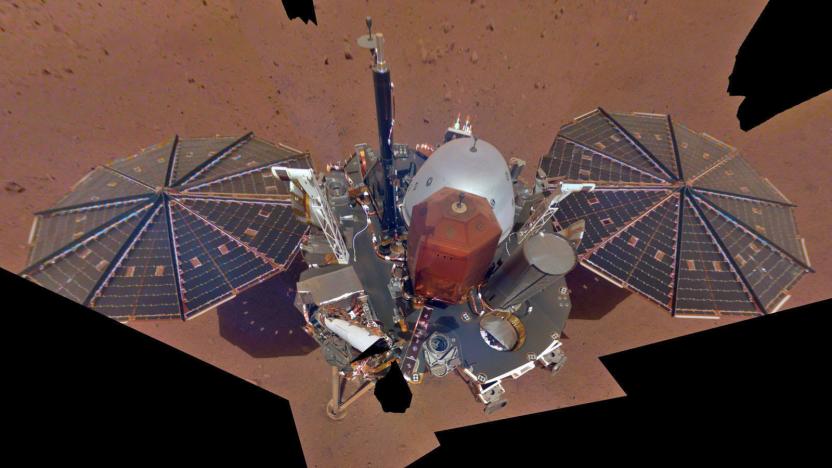
NASA's InSight lander is ready to monitor marsquakes
On December 19th, Mars InSight lander's ground team moved the vehicle's arm as far as it could reach and planted its seismometer 5.367 feet away. Seeing as the lander's main goal is to gather data so we can learn more about the red planet's interior, the team considers that seismometer its most important instrument. The mission's Principal Investigator, Bruce Banerdt, said seismometer deployment is as significant as landing InSight on Mars. "We need it in order to complete about three-quarters of our science objectives," he explained.
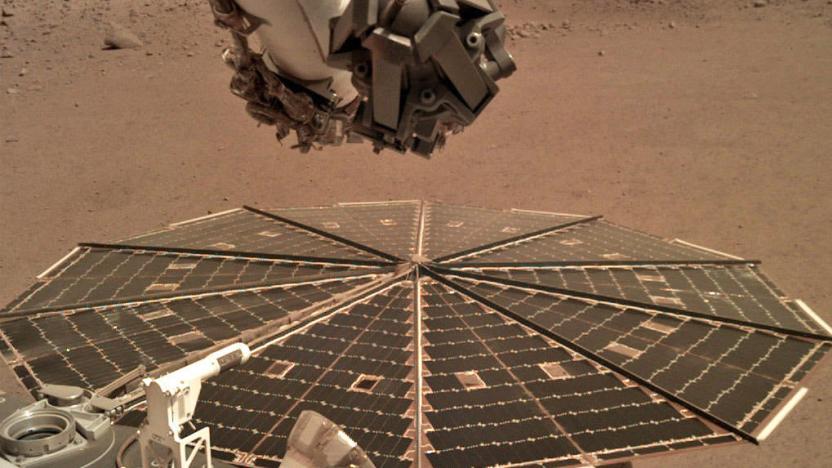
Hear the wind on Mars for the first time, thanks to the InSight lander
Since landing on Mars last week, NASA's InSight lander has been taking pictures of itself and its surroundings as it prepares to unload the scientific instruments it brought along to the planet. But the lander has also picked up something that other Mars missions never have -- audio of the planet's winds. "Capturing this audio was an unplanned treat," Bruce Banerdt, InSight's principal investigator, said in a statement. "But one of the things our mission is dedicated to is measuring motion on Mars, and naturally that includes motion caused by sound waves."
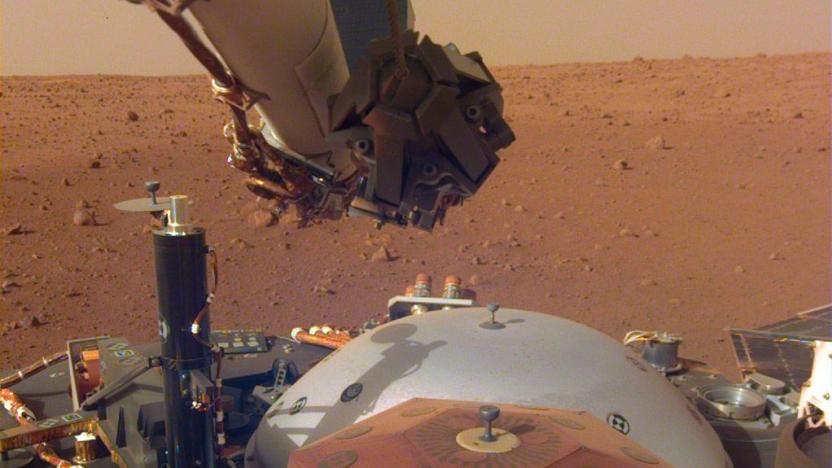
NASA’s InSight lander is ready to get to work
NASA's InSight lander arrived on Mars last week and now it's prepping for the next stage of its mission. The lander is equipped with a nearly six-foot-long arm, which will be used to lift sensitive scientific instruments off of the lander and place them on the Martian surface -- the first time a robot has been used to do so on another planet. Thus, the arm plays a really key role in this next step of the InSight mission, as placement will be crucial for the mission's overall success. But new images from InSight show the lander is up for the challenge, as the arm is working and has already started to collect images of its surroundings, information that scientists will use to determine where InSight's instruments should be placed.

InSight lander settles into its Martian 'sandbox'
Now that the Insight lander has settled in on Mars, scientists are learning more about the spot it's in. With its 7-foot-wide solar panels fully deployed, it has already set a record for the most energy generated in a single day by any lander or rover on Mars at 4,588 wH. Also, the protective covers are coming off of its cameras, which should enable higher-resolution images.
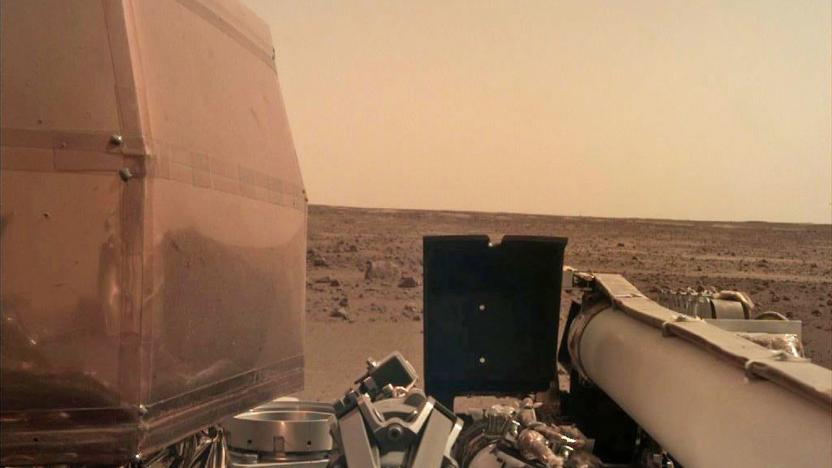
NASA's InSight lander delivers its first clear photo from Mars
Earlier today the InSight lander successfully touched down on Mars, and it's already crushing the 'gram. Signals indicating that its solar panels had opened and were generating power came back to Earth at about 8:30 PM ET, along with a few photographs relayed via another visitor to Mars: the Odyssey orbiter. While it's expected to take two to three months to fully deploy the lander's instruments, this image came from its Instrument Deployment Camera which is mounted on a robotic arm.
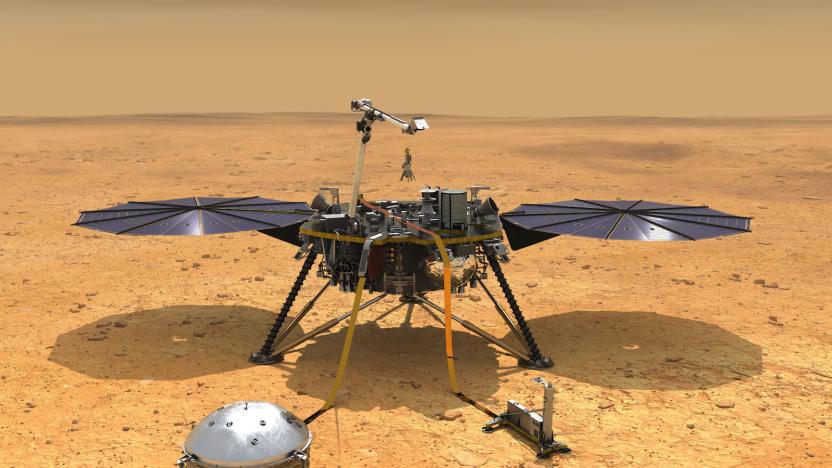
NASA’s InSight lander has arrived on Mars
NASA's InSight lander has touched down on Mars, completing its over six-month journey to the planet. InSight, which stands for Interior Exploration using Seismic Investigations, Geodesy and Heat Transport, landed on Mars just before 3PM Eastern after a successful entry, deceleration and parachute deployment. The lander will soon get to work -- assuming its solar panels deploy correctly -- and will, for the first time, give us a look at the interior of our planetary neighbor.










